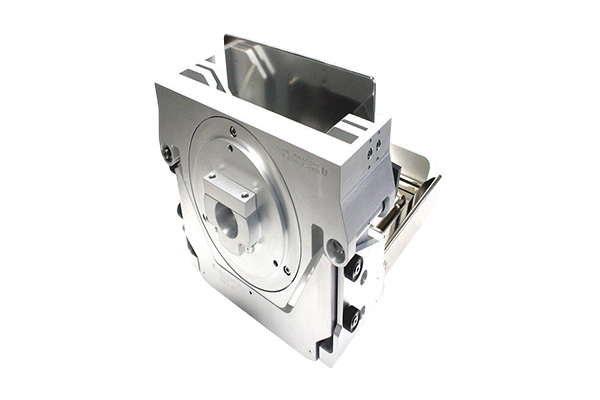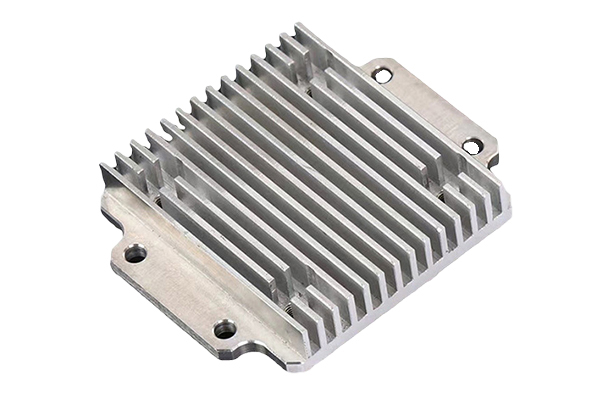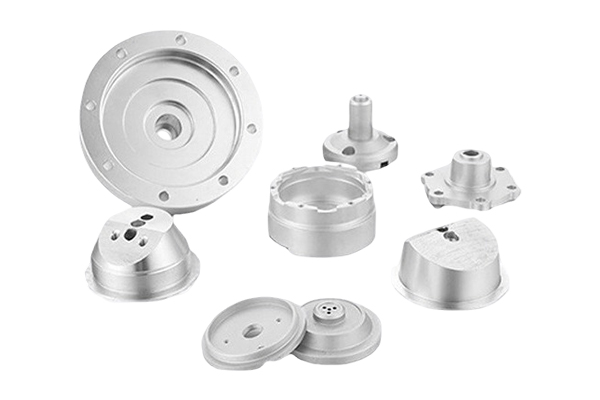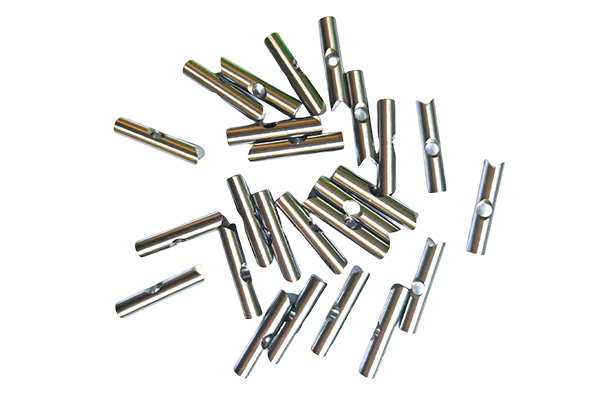How do explosion-proof camera housings ensure safety in high-risk environments?
Release Time : 2025-08-04
The safety of explosion-proof camera housings is crucial in high-risk environments. They not only protect the cameras inside from external threats but also ensure the stable operation of the entire surveillance system. By utilizing advanced materials, sophisticated design, and rigorous manufacturing processes, explosion-proof camera housings provide exceptional safety in a variety of harsh conditions.
First, selecting the right materials is fundamental to ensuring the safety of explosion-proof camera housings. Typically, these housings are constructed from high-strength alloys or specialized engineering plastics, which offer excellent impact and corrosion resistance. For example, certain alloys possess exceptional hardness and toughness, making them suitable for withstanding the impact of shock waves and splashes from explosions. They are also resistant to chemical attack, making them suitable for use in corrosive environments such as chemical plants. Special engineering plastics, on the other hand, are renowned for their lightweight and excellent insulation properties, effectively resisting both electrical shock and physical damage. By selecting these high-performance materials, explosion-proof camera housings maintain structural integrity and functional stability in extreme environments.
Second, sophisticated design is also essential to enhancing the safety of explosion-proof camera housings. Designers meticulously consider every detail based on the specific application requirements. For example, the housing's sealed design effectively prevents dust, moisture, and other impurities from entering and damaging the camera equipment. Furthermore, some housings are equipped with special pressure relief valves or breather devices. When internal pressure rises excessively, these devices promptly release excess pressure, preventing pressure buildup and housing rupture. This proactive protection significantly enhances the housing's overall safety and makes it more resilient to emergencies.
Furthermore, the quality and reliability of explosion-proof camera housings are directly impacted by the quality of the manufacturing process. Modern manufacturing technologies such as CNC machining, laser cutting, and heat treatment are widely used in the production of housings. These high-precision processing methods ensure highly consistent component dimensions and excellent surface quality, reducing assembly errors and improving the overall structural integrity. In particular, in critical areas such as connectors and joints, even the slightest deviation can lead to seal failure or insufficient strength. Therefore, strict manufacturing standards and meticulous processing procedures are crucial to achieving highly secure explosion-proof camera housings.
In addition to materials and design, explosion-proof camera housings must undergo a series of rigorous tests and certifications to ensure their safety in real-world applications. These tests cover a wide range of aspects, from mechanical strength to environmental adaptability, simulating a variety of extreme conditions they may encounter. For example, impact testing verifies whether the housing can withstand strong impacts from all directions; waterproof and dustproof testing assesses the housing's sealing performance in humid or dusty environments; and temperature cycling testing verifies the housing's stability and durability under rapid temperature fluctuations. Only products that pass these rigorous tests and obtain relevant industry certifications can be truly considered "explosion-proof" safety equipment.
In practical applications, explosion-proof camera housings also need to be flexible and scalable to meet the needs of diverse scenarios. For example, in the petrochemical industry, due to the risk of flammable and explosive gases, camera housings must not only be explosion-proof but also anti-static to prevent fires or explosions caused by static electricity accumulation. In underground environments such as mines, camera housings require special consideration for pressure resistance and moisture resistance to ensure they can function properly under the complex conditions of deep underground. To address these specific needs, manufacturers can provide tailored solutions through modular design or customized services.
Finally, maintenance and servicing are crucial to ensuring the long-term safe and reliable operation of explosion-proof camera housings. Regularly checking the housing seals, cleaning surface dirt, and replacing aging components are essential preventative measures. Promptly identifying and remediating potential issues is particularly important for equipment exposed to harsh environments. By establishing a comprehensive maintenance plan and record-keeping system, users can better understand the condition of their equipment, extend its lifespan, and reduce failure rates.
In summary, explosion-proof camera housings achieve exceptional safety in high-risk environments through the use of high-performance materials, precision design, advanced manufacturing processes, rigorous testing and certification, and a focus on routine maintenance. They are not only a critical barrier protecting the cameras within but also a cornerstone for the continued stable operation of the entire surveillance system. With technological advancements and evolving market demands, we believe that explosion-proof camera housings will demonstrate even greater potential in even more areas, providing more comprehensive and reliable security protection for a wide range of industries.
First, selecting the right materials is fundamental to ensuring the safety of explosion-proof camera housings. Typically, these housings are constructed from high-strength alloys or specialized engineering plastics, which offer excellent impact and corrosion resistance. For example, certain alloys possess exceptional hardness and toughness, making them suitable for withstanding the impact of shock waves and splashes from explosions. They are also resistant to chemical attack, making them suitable for use in corrosive environments such as chemical plants. Special engineering plastics, on the other hand, are renowned for their lightweight and excellent insulation properties, effectively resisting both electrical shock and physical damage. By selecting these high-performance materials, explosion-proof camera housings maintain structural integrity and functional stability in extreme environments.
Second, sophisticated design is also essential to enhancing the safety of explosion-proof camera housings. Designers meticulously consider every detail based on the specific application requirements. For example, the housing's sealed design effectively prevents dust, moisture, and other impurities from entering and damaging the camera equipment. Furthermore, some housings are equipped with special pressure relief valves or breather devices. When internal pressure rises excessively, these devices promptly release excess pressure, preventing pressure buildup and housing rupture. This proactive protection significantly enhances the housing's overall safety and makes it more resilient to emergencies.
Furthermore, the quality and reliability of explosion-proof camera housings are directly impacted by the quality of the manufacturing process. Modern manufacturing technologies such as CNC machining, laser cutting, and heat treatment are widely used in the production of housings. These high-precision processing methods ensure highly consistent component dimensions and excellent surface quality, reducing assembly errors and improving the overall structural integrity. In particular, in critical areas such as connectors and joints, even the slightest deviation can lead to seal failure or insufficient strength. Therefore, strict manufacturing standards and meticulous processing procedures are crucial to achieving highly secure explosion-proof camera housings.
In addition to materials and design, explosion-proof camera housings must undergo a series of rigorous tests and certifications to ensure their safety in real-world applications. These tests cover a wide range of aspects, from mechanical strength to environmental adaptability, simulating a variety of extreme conditions they may encounter. For example, impact testing verifies whether the housing can withstand strong impacts from all directions; waterproof and dustproof testing assesses the housing's sealing performance in humid or dusty environments; and temperature cycling testing verifies the housing's stability and durability under rapid temperature fluctuations. Only products that pass these rigorous tests and obtain relevant industry certifications can be truly considered "explosion-proof" safety equipment.
In practical applications, explosion-proof camera housings also need to be flexible and scalable to meet the needs of diverse scenarios. For example, in the petrochemical industry, due to the risk of flammable and explosive gases, camera housings must not only be explosion-proof but also anti-static to prevent fires or explosions caused by static electricity accumulation. In underground environments such as mines, camera housings require special consideration for pressure resistance and moisture resistance to ensure they can function properly under the complex conditions of deep underground. To address these specific needs, manufacturers can provide tailored solutions through modular design or customized services.
Finally, maintenance and servicing are crucial to ensuring the long-term safe and reliable operation of explosion-proof camera housings. Regularly checking the housing seals, cleaning surface dirt, and replacing aging components are essential preventative measures. Promptly identifying and remediating potential issues is particularly important for equipment exposed to harsh environments. By establishing a comprehensive maintenance plan and record-keeping system, users can better understand the condition of their equipment, extend its lifespan, and reduce failure rates.
In summary, explosion-proof camera housings achieve exceptional safety in high-risk environments through the use of high-performance materials, precision design, advanced manufacturing processes, rigorous testing and certification, and a focus on routine maintenance. They are not only a critical barrier protecting the cameras within but also a cornerstone for the continued stable operation of the entire surveillance system. With technological advancements and evolving market demands, we believe that explosion-proof camera housings will demonstrate even greater potential in even more areas, providing more comprehensive and reliable security protection for a wide range of industries.







